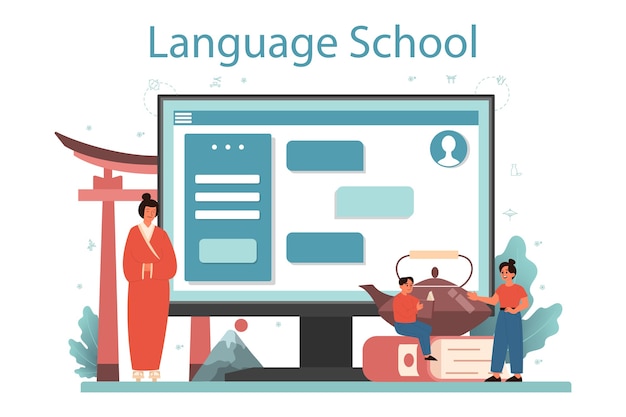Maximizing Language Learning with Language Labs: A Guide to Modern Language Lab Software

Language labs have long been an essential tool in education, enhancing how students learn new languages and refine their communication skills. In today’s digital age, traditional language labs have transformed, and advanced language lab software now offers a wealth of features that streamline and personalize the learning experience. This article explores the benefits of language labs, the features of language lab software, and how these tools can contribute to effective language acquisition.
1. What is a Language Lab?
A language lab is a dedicated learning environment designed to support the process of learning languages. Traditionally, language labs featured audio equipment and study materials to help students practice pronunciation, listening, and comprehension skills. With advancements in technology, modern language labs now include digital tools, multimedia resources, and interactive language lab software that facilitate immersive learning experiences.
Key Benefits of a Language Lab:
- Improved Pronunciation: Students can practice pronunciation using audio tools and receive instant feedback.
- Enhanced Listening Skills: Listening exercises in various accents and dialects develop comprehension.
- Immersive Environment: Language labs create a focused atmosphere where students engage in structured language learning.
2. The Role of Language Lab Software in Modern Education
With the shift to digital learning, language lab software has become a core component of modern language labs. This software replicates traditional functions but offers additional capabilities, making it a versatile tool for instructors and students alike.
Essential Features of Language Lab Software:
- Real-Time Interaction:
- Language lab software allows for real-time conversations, providing students with an opportunity to practice speaking with peers or instructors.
- Interactive activities, such as role-playing, enable students to engage in realistic scenarios and gain confidence in their conversational abilities.
- Recording and Playback:
- Recording capabilities are a fundamental feature of language lab software. Students can record their pronunciation and speaking exercises, then compare their recordings with correct models.
- This feature helps learners identify areas of improvement and track their progress over time.
- Multimedia Integration:
- Incorporating audio, video, and visual aids, language lab software enriches the learning experience and helps students engage with materials more deeply.
- Access to media files such as documentaries, dialogues, and cultural programs promotes a better understanding of language nuances and contextual usage.
- Vocabulary and Grammar Tools:
- Many language lab software platforms provide integrated vocabulary lists, grammar exercises, and quizzes.
- Self-assessment tools enable students to reinforce their knowledge and test their language skills.
- Customizable Learning Modules:
- Language lab software allows instructors to create customized lessons, suited to different language levels and goals.
- This flexibility benefits both teachers, who can tailor lessons to meet curriculum objectives, and students, who enjoy a personalized learning experience.
3. Advantages of Using Language Lab Software in Language Learning
The versatility of language lab software addresses various aspects of language learning, making it beneficial for both instructors and students.
a. Flexible and Self-Paced Learning:
- Language lab software supports asynchronous learning, allowing students to access materials and practice at their convenience.
- This flexibility empowers students to progress at their own pace, accommodating different learning speeds.
b. Enhanced Engagement through Interactive Learning:
- Through games, quizzes, and activities, language lab software keeps students engaged and motivated.
- Interactive modules are particularly effective for younger learners, as they promote active participation and reduce language learning anxiety.
c. Accurate Pronunciation Practice:
- Students can repeatedly listen to native pronunciations and try to mimic them, which is essential in mastering phonetics and intonation.
- Software that provides instant feedback on pronunciation accuracy is especially valuable, helping students correct mistakes immediately.
d. Improved Instructor-Student Communication:
- Teachers can monitor each student’s progress, provide personalized feedback, and adjust lesson plans accordingly.
- Language lab software enables group activities and individual assignments within a single platform, facilitating both collaborative and independent learning.
4. Language Lab Software: Popular Solutions
Several language lab software options are available today, each offering unique features to enhance the language learning process. Here are a few popular examples:
- Sanako: Known for its interactive learning modules, Sanako supports various languages and includes features like pronunciation feedback and teacher-student messaging.
- Robotel: Robotel focuses on language assessment and structured learning paths, making it suitable for school and university settings.
- Edmodo Language Lab: Edmodo’s platform integrates social learning and communication tools, offering a collaborative approach to language learning.
These tools allow educators to design tailored curriculums and help students enjoy an immersive experience through interactive multimedia.
5. Future Trends in Language Labs and Language Lab Software
As language learning continues to evolve, future language lab software is likely to incorporate advanced technologies like AI-based voice recognition, virtual reality (VR), and machine learning. These developments will:
- Enhance Pronunciation Precision: AI-based tools can analyze speech patterns more accurately, providing feedback on accents, tones, and inflections.
- Introduce VR-Driven Learning: VR environments offer students the chance to “visit” places where their target language is spoken, enhancing cultural immersion.
- Automate Progress Tracking: Machine learning algorithms will assess progress automatically, allowing instructors to focus more on interactive teaching.
These advancements promise to make language learning an even more dynamic and effective experience.
6. Conclusion: Unlocking Potential Through Language Labs
Modern language lab software is transforming how students learn new languages, providing a flexible and engaging approach to mastering foreign languages. Through interactive features, multimedia content, and AI-driven personalization, language labs today offer a tailored learning experience that builds confidence, fosters communication skills, and promotes cultural awareness. Whether in classrooms or through online learning platforms, language labs and their software are indispensable tools for successful language acquisition.
